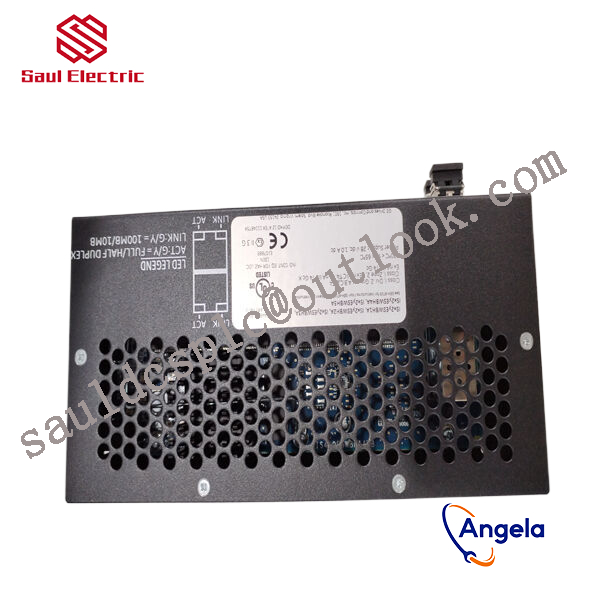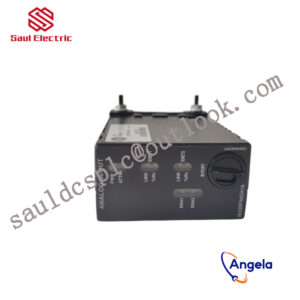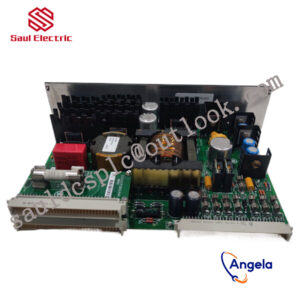Description
IS200BICLH1B Product Introduction

The specific application scope of the product
will depend on the needs of system integration and industrial application, but generally speaking, this type of embedded controller module can be applied to the following categories:
manufacturing processes, etc.
monitoring and control system.
of the controller module, as well as the specific needs of the customer.
designed to manage gas or steam turbines.
It has a CIMPLICITY graphical interface and an HMI with software suitable for running heavy-duty turbines.
be installed at the bottom of the cabinet. For a small setup that is easy to serve a triple redundant system, up to three components can be installed side by side.
he board can operate within a temperature range of 0 to 65 degrees Celsius without the need for a fan for cooling. NFPA Class 1. This board can be used for two applications.
Human-machine collaborative robot technology from seven major companies including ABB and SIASUN Human-machine collaborative robot is a new type of robot that can work directly side by side with humans without the need for isolation by safety fences. Human-machine collaborative robots are expected to fill the gap between fully manual assembly lines and fully automated production lines. In the past, people often talked about robots replacing human labor, but now robots are considered more of auxiliary tools. The rigid boundaries between automation and manual labor are gradually being dissolved. Efficient sensors, intelligent control technology and the most advanced software technology are integrated on the robot to ensure that humans and robots can cooperate safely without guardrails and can be flexibly applied without limiting locations and tasks. With this approach, employees can use the required number of robots at different production locations and for different purposes depending on the required piece quantity. Advantage Such sensitive robots can therefore be used, for example, as flexible production assistants in manufacturing and relieve employees by taking on manual work steps that previously could not be automated and were not ergonomically correct. For example, by taking on overhead tasks or lifting heavy objects, the burden on employees can be significantly reduced. Repeatable processes can be carried out with extremely high quality without the need for investments based on type or workpiece. Representative product introduction 1.ABB’s first human-machine collaborative robot YuMi abb”s first human-machine collaborative robot, the 14-axis robot YuMi, was announced by UL (Underwriters Laboratories) on September 22, 2015 to have obtained UL safety certification, highlighting its key safety design with human-machine collaboration capabilities. UL stated that ABB”s first dual-arm industrial robot YuMi that emphasizes human-machine collaboration has obtained the robot safety certification from UL. This not only brings indexical significance to the unit robot”s move towards human-machine interaction, but also ignites industrial momentum and provides support for the sustainable development and development of the robot industry. Popularize the use of injectable cardiotonic injections. Tang Jiade, general manager of UL Taiwan, said, “The certification process for robots with human-machine collaboration and multiple axes is complicated. Taking YuMi”s 14-axis arms as an example, there are 14 degrees of freedom for translation and rotation. Combining them produces more With fast movements, UL relies on its professional experience in safety to simulate various failure scenarios for evaluation based on different applications of robots to ensure that the robot can not only interact smoothly with people, but also interact smoothly with people in every situation. Be able to self-detect and maintain safety and reliability.” Cai Jingchun, associate director of ABB Taiwan”s industrial robot department, said, “ANSI/UL1740 robot and automation equipment standard is not only a commercial standard, but also a national standard recognized by the American National Standards Institute (ANSI). It has been certified by UL with global credibility, symbolizing YuMi”s Safety design has been rigorously and objectively evaluated and tested, and can lead the global industry to truly enter Industry 4.0/advanced manufacturing.” 2. Universal Robots’ flexible and safe full range of collaborative robot families Universal Robots is a pioneer in a new segment of collaborative robots that focuses on user operability and flexibility. At the Shanghai International Automobile Manufacturing and Assembly Exhibition from August 26 to 28, 2015, Universal Robots” full range of collaborative robot families were unveiled. The “human-robot collaboration” function of UR robots allows employees to work safely and closely with robots. The unique force sensing allows it to automatically limit the amount of force generated during contact once it collides with a person. For example, the default force sensing upper limit is set to a force of 150 Newtons. That is, once a person comes into contact with the robot and a force of 150 Newtons is generated, the UR robot will automatically stop working. But it can also be adjusted to automatically stop working once it encounters a force as low as 50 Newtons on the working path. In addition, the UR robot has an intuitive user programming interface, and the robot movement direction can be controlled by clicking the arrows on the touch panel. For workers, simple installation, debugging, and programming can be completed without professional technical background or professional programming experience. These unique advantages have made UR robots favored by many automobile manufacturers around the world. Universal Robots currently has three collaborative robots – UR3, UR5 and UR10. The newly launched UR3 in March 2015 is the most flexible and lightweight desktop robot on the market today that can work side by side with workers. It weighs only 11 kilograms, but has a payload of up to 3 kilograms. All wrist joints can rotate 360 degrees, and the end joints can rotate infinitely. UR5 has a dead weight of 18 kg, a payload of up to 5 kg, and a working radius of 85 cm. UR10 can carry 10 kg and has a working radius of 130cm. All three robots are renowned in the industry for their ease of programming, collaboration, safety and reliability when working with people. It is reported that the UR robot also has an intuitive user programming interface, and you can control the robot”s movement direction by clicking the arrows on the touch panel. 3. FANUC collaborative robot CR-35iA with the largest payload The maximum load on the wrist of the CR-35iA robot reaches 35kg, and the movement radius can reach 1813mm. As a collaborative robot, the complete safety functions allow the CR-35iA to work in the same space with people without isolation by safety fences. The excellent design also enabled the CR-35iA to win the Industrial Design Gold Award at this year’s Industry Expo, which was personally awarded by Vice Premier Ma Kai of the State Council.
IS200VSVOH1B From General Electric in the United States
IS230TVBAH4A High performance processor module GE
IS210AEBIH1BAA GE power control board
IS200VRTDH1DAC From General Electric in the United States
IS200TSVCH2ADC Gas turbine system Mark VI
DS200LRPAG1AAA Gas turbine system Mark VI
DS215TCQAG1BZZ01A I/O excitation redundant module GE
DS200DCFBG1BLC I/O excitation redundant module GE
IS210BPPCH1AC Processor/Controller Mark VI System
IS210AEBIH1BED From General Electric in the United States
IS200ISBEH2ABB GE power control board
IS200VPWRH1AF GE power control board
IS200ERRRH1A Gas turbine system Mark VI
IS200VTCCH1CBB High performance processor module GE
IS200TBACIH1B Gas turbine system Mark VI
IS200VTCCH1CBB GE power control board
IS200RCSBG1BAA From General Electric in the United States
IS200ICIAH1ABB From General Electric in the United States
IS200TREGH1B GE power control board
IS215UCVEH2A Processor/Controller Mark VI System
IS200ISBBG2AAB Processor/Controller Mark VI System
IS200TREGH1BDB Gas turbine system Mark VI
IS220PVIBH1A I/O excitation redundant module GE
DS200CTBAG1ACC From General Electric in the United States
IS200BPIAG1AEB From General Electric in the United States
IS200ERRBG1A High performance processor module GE
IS200VSVOH1BDC I/O excitation redundant module GE
DS200TCCAG1BAA GE power control board
DS200TCTGG1AFF GE power control board
IS200EXHSG3AEC High performance processor module GE
IS200TPROS1CBB High performance processor module GE
IS200EXAMG1A Gas turbine system Mark VI
IS220PDOAH1B I/O excitation redundant module GE
IS200WETBH1BAA GE power control board
IS200VCMIH1BCC Processor/Controller Mark VI System
DS200UCPBG6AFB Processor/Controller Mark VI System
IS200TRLYH2C I/O excitation redundant module GE
DS200TCQAG1BEC Processor/Controller Mark VI System
IS215SUCVEH2AE Gas turbine system Mark VI
IS230TBAIH2C High performance processor module GE
IS200ECTBG1ADE I/O excitation redundant module GE
IS200JPDPG1A GE power control board
IS200TBCIH1BBC High performance processor module GE
IS200TREGH1BDC I/O excitation redundant module GE
IS215UCVEM09A Gas turbine system Mark VI
IS200BICIH1ADB Processor/Controller Mark VI System
IS215ACLEH1A High performance processor module GE
IS200SAMBH1A Gas turbine system Mark VI
IS200TREGH1B I/O excitation redundant module GE
IS220PTCCHIA Processor/Controller Mark VI System
IS215PCMIH1AC Gas turbine system Mark VI
IS220PTURH1A GE power control board





